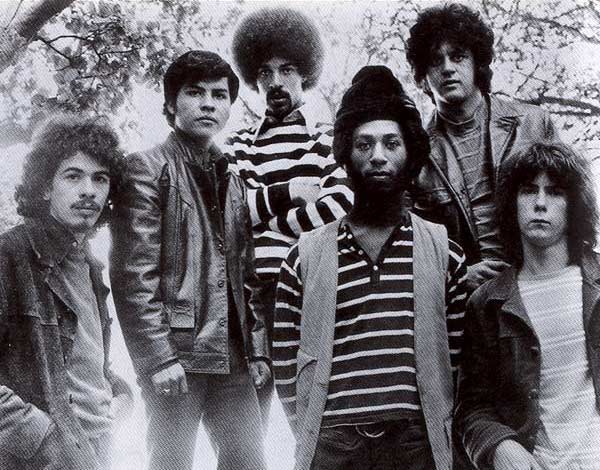Santana is the main exponent of Latin-tinged music, especially because of its use of Latin percussion (congas and timbales etc.). Carlos Santana, the bandleader, is known for his distinctive, high-pitched guitar playing. It was the last major act to emerge out of the psychedelic San Francisco music scene in the 1960s. They enjoyed huge success towards the end of the decade, and well into the early 1970s. As the band’s members left, the musical direction changed to a more contemplative, jazzy style. Carlos Santana took over the band’s name and guided it to steady commercial success for the next quarter century. Santana was no longer a major commercial force in the music industry, but the group still managed to draw large audiences to its concerts around the world. The band made a remarkable and historic comeback with Supernatural in 1999. It featured many guest stars and became Santana’s best-selling album and won a number of Grammy Awards. Carlos Santana, a Mexican native, was born in Autlan de Navarro (Mexico) on July 20, 1947. He moved to San Francisco in early ’60s and by that time, he had already been playing the guitar professionally. He formed the Santana Blues Band in 1966 with Gregg Rolie, a keyboard player and singer, and several other musicians. The personnel changed frequently. Named after a musician’s union requirement that only one person be designated as a leader of a band, the name did not initially indicate that Carlos was the group’s leader. David Brown, a bass player, was born in New York on February 15, 1947. Carlos, a high school friend and conga player Mike Carabello, joined the group early. He did not stay for long. The band consisted of Rolie, Brown and Bob “Doc”, Livingston as drummers, while Marcus Malone was the percussionist. Bill Graham, a promoter, was the first to notice the band and gave it his debut at the Fillmore West theatre on June 16, 1968. Columbia Records signed Santana and sent David Rubinson to record the band during a four-night stand at Fillmore West, December 19-22, 1968. The results of the tape were not released until nearly 30 years later when Columbia/Legacy published Live at the Fillmore 1968. Livingston and Malone were both replaced in 1969 by Carabello (born in San Francisco on July 6, 1949) and drummer Michael Shrieve (born in San Francisco on July 6, 1949). A second percussionist was Jose “Chepito” Areas, who was born in Leon, Nicaragua, July 25, 1946. This made Santana a sextet. The band released its self-titled debut album, and began touring the country. They made an important stop at Woodstock on August 15, 1969. The same month saw the release of Santana. It reached the Top Five and was a huge success. The single went on to sell more than two million copies and become the Top 40 and Top Ten songs, “Jingo”, and “Evil Ways”. Santana’s rendition of “Soul Sacrifice”, which was released in 1970, was a highlight of Woodstock and its soundtrack album. Abraxas, the second album by the band, was released in September 1970. It was even more popular than its predecessor. It reached number one and remained in the charts for more than a year and a half. The album also spawned the Top Five hit “Black Magic Woman”, and the Top Ten hit, “Oye Como Va.” At the end of 1970, Neal Schon, a teenage guitarist, joined the band. Santana III was Santana’s third album. It was recorded by seven members of the band, with several guest musicians mentioned in the credits. The album, which was released in September 1971, reached number one and sold more than two million copies. It also spawned the Top Ten hit “Everybody’s Everything” as well as the Top 20 hit (“No One to Depend on”) It marked the end to Santana’s Woodstock-era edition, which was disbanded at the end the tour supporting it. Carlos retained the rights to the band’s name. A tour with Buddy Miles resulted in Carlos Santana recording a live duo album.
